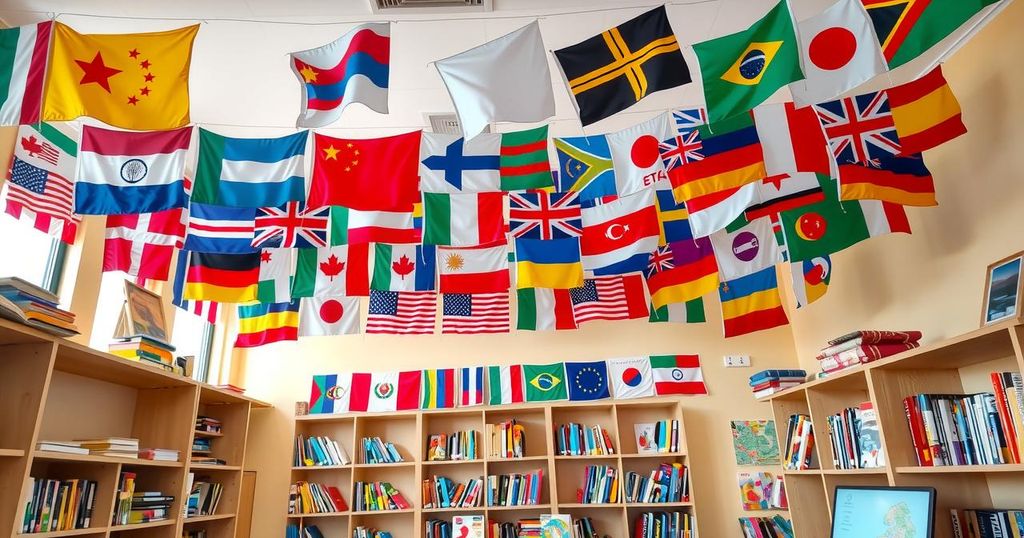The Houthi Movement: Origins, Influence, and Recent Developments in Yemen
The Houthi movement, formally known as Anṣār Allāh, is an Islamic fundamentalist group from northern Yemen engaged prominently in the Yemeni Civil War. Suffering historical marginalization, the Houthis, with Iranian support, evolved into a powerful military force, recently launching attacks on Israel and disrupting maritime trade amid rising geopolitical tensions. Their actions highlight their significant role in both regional security dynamics and the ongoing conflict in Yemen.
The Houthi movement, formally known as Anṣār Allāh, is an Islamic fundamentalist group that emerged from a revivalist movement among Zaydī Muslims in northern Yemen. This movement has evolved into a principal actor in the ongoing Yemeni Civil War, intensifying since 2014. The Houthis initially arose in response to perceived marginalization by the Yemeni government and foreign influences, particularly from Saudi Arabia and the United States. With substantial support from Iran, they have fortified their military capabilities and expanded their influence, particularly evident through aggressive military actions, such as missile strikes against Israel and disruptions of global maritime trade in the Red Sea amidst the recent escalation of the Israel-Hamas conflict. Their origins trace back to the historical Zaydī community, which has fought to preserve its identity against Sunni encroachments, leading to a broader socio-political awakening among the Zaydī populace.
The movement’s founder, Hussein Badr al-Din al-Houthi, initially aimed to provide an alternative to Wahhābī ideologies through educational and social initiatives. His subsequent rise, after governmental repression, signified the transformation of localized frustrations into a militant resistance movement. The Houthis seized control of the Yemeni capital, Sanaa, in 2014, following significant public dissent against President Abd Rabbuh Mansur Hadi’s administration. Their affiliation with Iran has further complicated regional dynamics, as the Houthis have executed sophisticated strikes targeting installations in Saudi Arabia and, more recently, maritime vessels. These events underline the Houthi movement’s ambition to position itself as a formidable force within the regional geopolitical landscape—a stance that has elicited international military responses and heightened tensions in an already volatile region.
The Houthi movement, known for its roots in the Zaydī branch of Shiʿi Islam, arose in northern Yemen as a reaction against foreign intervention and historical marginalization. The group’s founding figure, Hussein Badr al-Din al-Houthi, sought to reclaim the Zaydī identity amid encroachments by Wahhābī thought, which gained traction through Saudi influence. Following the unification of Yemen in 1990 and the establishment of a parliamentary system, the Houthis leveraged a political platform to oppose both domestic and foreign adversarial narratives. However, governmental repression ignited a burgeoning militant response, culminating in their domination of significant territories within Yemen and the onset of the civil war, which has drawn regional players into a complex conflict.
The Houthi movement’s evolution from a localized revivalist group to a pivotal military force in the Yemeni Civil War underscores the complexities of regional politics in the Middle East. The movement’s actions, particularly in response to the Israel-Hamas conflict, have amplified its role as a significant player capable of influencing geopolitical events beyond Yemen’s borders. As ongoing international responses unfold, the Houthis have asserted their agency in the regional arena, perpetuating a cycle of conflict that challenges the prospects for peace in Yemen and threatens broader stability. Their trajectory reflects both a storied history of resistance and the intricate web of alliances shaping contemporary Middle Eastern politics.
Original Source: www.britannica.com








Post Comment